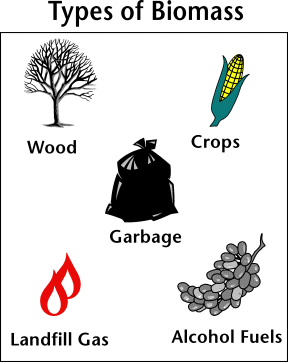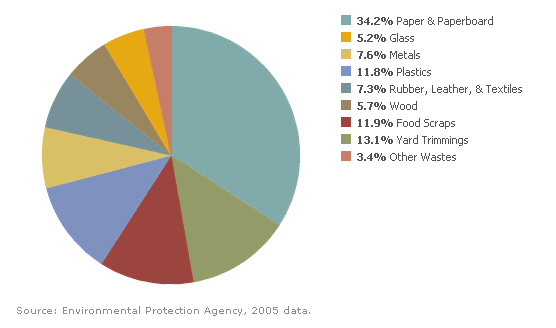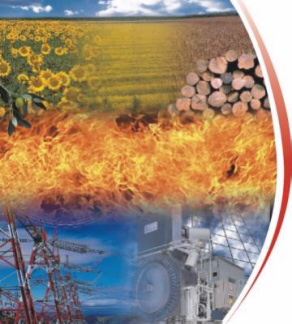|

Biomass: Biomass is fuels that are derived from timber, agriculture, food processing wastes, animal wastes or fuel crops.
The most common type is wood logs from trees, which can be burned, generating heat which creates steam which turns turbines.
The whole process is rather similar to coal burning plants, but burning trees instead, which has environmental benefits such
as highly reduced emissions of SO2, far more natural levels of emission of CO2, and diversion of wood waste from landfills
and so reduction of production of methane.
Landfill Gas: When trash is buried at a landfill, it is placed in an oxygen free environment, so the waste produces fair amounts
of gases, especially the combustible methane. The gases would add to global warming if released into the atmosphere but are
fire hazards and unsafe left underground. However, burning them for fuel would work. The gas could be collected by a series
of wells drilled into the landfill, leading to a piping system. The gas can be used or can be refined to purer methane (there
is a fair amount of CO2 in the gas as well). This purer methane gas better serves larger, electricity generating turbines
or fuel cells.

|
| a diary barn and digester |
Digester Gas: A slightly more rare and experimental form, digester gas starts as manure or sewage. This is then sent to a
digester plant, where anaerobic digesters, which produce methane, are set to work on the waste. The methane which is produced
can be burned for electricity generation. The average American creates about 100 gallons of wastewater each day—100
gallons that, if processed correctly, could produce high quality methane that could be burned for electricity. The process
is already being used by some dairy farms to create electricity from their manure.
Municipal Solid Waste: Municipal solid waste is the trash which sits in our landfills. However, it can be burned for energy
heat which can be used to generate electricity. Some municipal solid waste can be toxic, others difficult to burn (such as
large appliances), but overall it is a way to create energy and dispose of trash at the same time.

|
